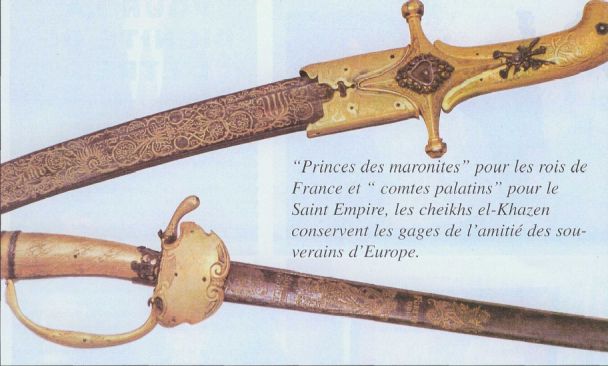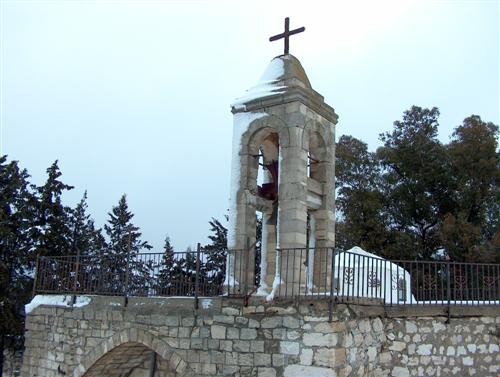
Editor’s Note: What happened in Syria has not stayed in Syria. In
2014, Islamic State forces swept back into Iraq, and terrorism,
sectarian tension, and fear have spread throughout much of the Middle
East. One bit of good news is to be found in an unexpected place:
Lebanon. The Middle East Institute’s Paul Salem explains why, so far at
least, Lebanon has survived the chaos emanating from Syria.
***
The small, divided, and weak state of Lebanon has survived the
political, security, and refugee challenges of the Syrian maelstrom next
door – at least so far. The political system has stalled, the economy
has slowed, security has deteriorated, and sectarian tensions have
increased, but state, society and economy have all persevered, and there
has been no major implosion or explosion. I am frequently asked
what some of the reasons for this surprising resilience are and from
where might the major risks for Lebanon still come in the months and
years ahead.
The first source of Lebanon’s resilience is the Taif Agreement of
1989. Taif established a way of sharing power through the political
system and—although famously inefficient at decision-making—all the
major factions have a share and stake in the political system. No major
faction seeks to violently overthrow it. Lebanon’s civil wars in 1958
and 1975 were in large measure rebellions against the domination of one
community—the Maronites—over the state. The civil wars in Syria, Iraq,
Libya, and Yemen, are all also the result of basic and major denials of
representation and inclusion in the state. To paraphrase and alter a
famous political catchphrase, when it comes to major rebellions or civil
wars, “It’s the politics, stupid.” In addition, the Lebanese state,
while oligarchic, sectarian, and corrupt, presides over a fairly free,
open, and pluralistic society with only limited levels of state
repression. And while elections for parliament and president have been
delayed for two years, all major positions in the state have been—and
will be—ultimately decided by elections. There is a vibrant civil
society movement that has protested to profoundly reform the system, but
is a healthy force that maintains some pressure on the oligarchs and
definitely does not threaten system collapse or civil war. The Lebanese
political system is definitely in need of a raft of political reforms,
but the basic inclusiveness of the system remains a key bulwark at
least against serious civil conflict of the kind we see in several
neighboring Arab countries. Indeed, until Syria and Iraq arrive at some
agreed arrangement for representation and sharing of power in the state,
with some measure of democratic accountability, they are not likely to
see an end to civil conflict.

By Hugh Naylor – Washington Post
ZAHLE, Lebanon — Something remarkable
is happening in this Lebanese farming town. Roads are no longer dark at
night, and water is pumped to homes without interruption. There’s electricity here in Zahle, 24 hours a day, seven days a week.
And
if you don’t think that’s a big deal, ask residents of just about any
other town in this tiny country. They endure daily outages that can last
18 hours, so they pay exorbitant fees to opportunistic owners of
private electricity generators to get enough power. In fact,
millions of people across the Middle East are dealing with worsening
power cuts. The issue fed the frustrations behind the Arab Spring
revolts of 2011 and presents a daunting challenge for the region’s growing populations, including in war-torn countries such as Yemen and Iraq.
But
in Zahle, a town of about 150,000 in Lebanon’s scenic Bekaa Valley,
residents overcame energy woes with political will and creativity,
offering the rest of the region possible lessons for a way to obtain
reliable and affordable electricity.
نشرت بواسطة:Bitajarodفي أخبار خاصة 8 ساعات مضت 0

By catholicherald.co.uk
The deputy mayor of Nice has said that nuns wearing habits are no more welcome on his beaches than women wearing burkinis. Speaking to presenter Edward Stourton on the World at One on BBC
Radio 4 yesterday, the Deputy Mayor, Rudy Salles defended the burkini
ban and said: “What is the burkini? There is bikini and there is burka
and the burka is forbidden. When you go to the beach you wear a bathing
suit. You don’t go to the beach as you want. If I want to go on the
beach naked it’s forbidden-I cannot.
“So if you want to go to the beach in a burkini it’s forbidden
because it is a provocation. Religion and the state are completely
separated. Religion is the affair of each one but each one at home, each
one at church, not each one in the street.”
When Edward Stourton asked him: “What about a Catholic nun. Would she be allowed to appear on the beach wearing her habit?” The deputy mayor replied: “No. The same.”

Mia Bloom, The Conversation
This week the world once again witnessed an Islamic State’s use
of at least one child bomber, perhaps two. A child between the ages of 12 and 14 was reportedly the culprit behind a suicide attack
– blowing up the wedding of Besna and Nurettin Akdogan in
Gaziantep, Turkey and killing 54 people on Aug. 20.
Although now the Turkish government is not certain whether it was
a child or an adult, it’s certainly not the only time children
have been used by terrorist networks to perpetrate attacks. The following day, a child was caught before he could detonate a suicide bomb
at a Shi’a school in Kirkuk, Iraq.
During the course of research for our book, “Small Arms: Children
and Terror,” John Horgan and I have learned how IS socializes
children into their terrorist network. We have also had the
opportunity to meet with children who have been rescued from
terrorist groups in Pakistan.
by Rafi Letzter There’s an endless supply of fad diets out there. Many of them have at least some studies to back them up. Others don’t. But there’s one way of eating that has an unusually substantial body of research and scientific consensus to back it up: the restricted Mediterranean diet. If all you want to do […]

By Pamela Engel- Business Insider
The terrorist group ISIS, while dealing with a consistent
loss of territory in Iraq and Syria and unfulfilled
plans for Libya, has shed benefits and raised taxes as it
starts
running out of money. An ISIS memo found earlier this year saying the group had
cut salaries for fighters by 50% was widely circulated as
evidence of the group’s financial problems.
But Adam J. Szubin, the acting under secretary for terrorism and
financial intelligence at the US Treasury Department, explained
that’s not the extent of the measures ISIS has taken to rein in
its spending. “Overall, ISIL is significantly constrained in terms of its
funding,” he
told the CTC Sentinel, a publication of the Combatting
Terrorism Center at West Point.
Szubin noted that ISIS is cutting benefits as it tries to deal
with a cash crunch. “We received information earlier this year indicating that ISIL
stopped paying death benefits to families of ISIL personnel,”
Szubin said. “That’s a core benefit that a group like ISIL needs
to promise to the families of those going on suicide or likely
suicide missions in order to maintain their operational tempo.”

BEIRUT // For a city still divided more
than 25 years after the end of Lebanon’s civil war, Beirut is embarking
on a journey to preserve fading memories of the conflict in the
once-residential building-turned snipers’ lair of Beit Beirut or house
of Beirut. Also known as the Barakat house, the building – which
sits on Damascus Road and straddles the green line that used to separate
Christian East Beirut and Muslim West Beirut – will be transformed into
a museum and cultural centre when it opens in late September this year.
The
ochre Ottoman-style edifice with elements of Art Deco and Rocco styles
will tell the stories of the snipers who once lived and fought within
its walls, as well as the story of the bourgeois Barakat family, who
commissioned the building in 1924. It was designed by Lebanese
architect Youssef Afandi Aftimos, with two more stories added by
architect Fouad Kozah in 1932. Aftimos was a well-known architect, who
built the grand theatre in downtown Beirut and the clock tower of the
Grand Serai, now the seat of the Cabinet.
The
Barakat family plaque still hangs in the ruins of the building,
surrounded by pockmarked walls that serve as a lasting memory of the
15-year civil war that killed more than 100,000 people and left several
building carcasses strewn along the green line.
The Daily Star BEIRUT: Lebanon’s Foreign Ministry offered its condolences Friday to Italy over a powerful earthquake two days earlier that caused more than 200 deaths. “The ministry extends its condolences to the leadership and people of Italy, who lost many innocent lives to a deadly earthquake,” the statement said. “We stand by the Italian […]

by Josh Wood
Saudi’s oil price fallout echoes beyond the bounds of the GCC. For more on how it is affecting Pakistan – Lebanon’s economy has long depended on the Arab Gulf states.
Hundreds
of thousands of Lebanese work there, sending their savings home to
relatives. It is the main destination for exports — both human capital
and produced goods — as well as the leading supplier of investment. There
is often a feeling that without the Gulf’s role, Lebanon’s beleaguered
economy could not survive. But this relationship could be in trouble.
With
global oil prices falling since 2014, the economic diversification
plans touted by Gulf states are finally being put to the test. For the
many Lebanese working in the Gulf, their livelihoods and billions of
dollars in annual remittances, depend on the continued strength of these
economies. More
immediate is the growing divide between GCC countries and the Lebanese
government over the role of Hizbollah, with Saudi Arabia leading the
charge against the group and economists fearing major economic
ramifications on Lebanon.
Khazen History


Historical Feature:
Churches and Monasteries of the Khazen family

St. Anthony of Padua Church in Ballouneh
Mar Abda Church in Bakaatit Kanaan
Saint Michael Church in Bkaatouta
Saint Therese Church in Qolayaat
Saint Simeon Stylites (مار سمعان العامودي) Church In Ajaltoun
Virgin Mary Church (سيدة المعونات) in Sheilé
Assumption of Mary Church in Ballouneh
1 - The sword of the Maronite Prince
2 - LES KHAZEN CONSULS DE FRANCE
3 - LES MARONITES & LES KHAZEN
4 - LES MAAN & LES KHAZEN
5 - ORIGINE DE LA FAMILLE
Population Movements to Keserwan - The Khazens and The Maans
ما جاء عن الثورة في المقاطعة الكسروانية
ثورة أهالي كسروان على المشايخ الخوازنة وأسبابها
Origins of the "Prince of Maronite" Title
Growing diversity: the Khazin sheiks and the clergy in the first decades of the 18th century
Historical Members:
Barbar Beik El Khazen [English]
Patriach Toubia Kaiss El Khazen(Biography & Life Part1 Part2) (Arabic)
Patriach Youssef Dargham El Khazen (Cont'd)
Cheikh Bishara Jafal El Khazen
Patriarch Youssef Raji El Khazen
The Martyrs Cheikh Philippe & Cheikh Farid El Khazen
Cheikh Nawfal El Khazen (Consul De France)
Cheikh Hossun El Khazen (Consul De France)
Cheikh Abou-Nawfal El Khazen (Consul De France)
Cheikh Francis Abee Nader & his son Yousef
Cheikh Abou-Kanso El Khazen (Consul De France)
Cheikh Abou Nader El Khazen
Cheikh Chafic El Khazen
Cheikh Keserwan El Khazen
Cheikh Serhal El Khazen [English]
Cheikh Rafiq El Khazen [English]
Cheikh Hanna El Khazen
Cheikha Arzi El Khazen
Marie El Khazen
Theme: Illdy.